- Home
- Robert Silverberg
To Be Continued: The Collected Stories of Robert Silverberg, Volume One
To Be Continued: The Collected Stories of Robert Silverberg, Volume One Read online
Subterranean Press 2006
To Be Continued © 2006 by Agberg, Ltd. All rights reserved.
Electronic Edition
ISBN: 978-1-59606-385-3
Subterranean Press
PO Box 190106
Burton, MI 48519
www.subterraneanpress.com
Table of Contents
Introduction
Gorgon Planet
The Road to Nightfall
The Silent Colony
Absolutely Inflexible
The Macauley Circuit
The Songs of Summer
To Be Continued
Alaree
The Artifact Business
Collecting Team
A Man of Talent
One Way Journey
Sunrise on Mercury
World of a Thousand Colors
Warm Man
Blaze of Glory
Why?
The Outbreeders
The Man Who Never Forgot
There Was an Old Woman
The Iron Chancellor
Ozymandias
Counterpart
Delivery Guaranteed
Introduction
The present volume represents the beginning of my third try at putting together my Collected Short Stories. I hope to get it right this time.
I’ve been assembling my stories in collections almost since the beginning of my career. The first, a paperback called Next Stop the Stars, was published in 1962 and contained five very early stories, three of which (“Blaze of Glory,” “Warm Man,” and “The Songs of Summer”) have been carried forth into this very book. Then came Godling, Go Home in 1964—eleven more stories, of which another trio (“Why?”, “A Man of Talent,” and “The Silent Colony” are to be found here), and then To Worlds Beyond, a nine-story book of 1965, and so on and on and on through an inordinate number of collections over the years, that because of their various overlappings are the bane of bibliographers (especially the one called Needle in a Timestack, published in two different editions with largely different tables of contents, neither volume containing the short story of that name).
Finally, in 1991, I felt it was appropriate to bring some order out of all this chaos by doing a systematic series of books collecting all the stories of mine that I thought were worth preserving in such a set. And so, the following year, Bantam Books published The Collected Stories of Robert Silverberg, Volume One: Secret Sharers. Alas, Volume One of this ambitious series did not begin with my earliest stories. For commercial reasons the publisher thought it best to start the project off with my more recent work, material that was, unsurprisingly, rather more skillful than the stories I had written in my twenties and therefore might be deemed a more auspicious way to launch the project. And so Volume One, a fine, fat book of 546 pages, included two dozen stories and novellas that had been written between 1982 and 1988, a cluster of award-winners among them.
And then there was no Volume Two. Lou Aronica, the editor who had championed my short-story series at that publishing house, resigned; his successor was not interested in continuing it; and that was that. Meanwhile, though, I had found another champion overseas: my longtime British publisher and friend, Malcolm Edwards, who agreed to bring out a six-volume set. Since Secret Sharers was already assembled, Malcolm started with that, splitting it into two volumes under the titles Pluto in the Morning Light and The Secret Sharer, and following them in due course with a third volume covering 1969 to 1974; a fourth that (at last!) offered my earliest stories, those of 1953 to 1958 that you will find here; a fifth spanning 1962 to 1970; and a sixth and last in this zigzag progression, embracing the work of 1989 to 1995.
These six books left out a good many short stories of mine that Malcolm had previously published in other collections, and some of my best novellas, too, had to be omitted for reasons of space. And, of course, the jumbled chronological sequence, with a big group of my most recent stories again coming first in the British set, my earliest ones to be found in Volume Four, and so forth, made things perplexing for readers trying to follow the course of my development in some rational way.
So, after a lapse of some years, I’m trying again. This time it is my hope the stories will appear, volume by volume, in strict chronological order, by which I mean in the order in which they were written, not in order of first publication. (They differ in this from the British books, in which, for some reason that I no longer remember, the order of stories is not quite chronological.) So here we have the stories of the dawn of my career, written between 1953 and 1958. 1958 makes a natural ending place for this volume, because that year marked the termination of my period of high-velocity science-fiction story output; I wrote practically no short s-f in the next three years, and when we resume with Volume Two, it will be with stories from 1962.
I don’t know how many short stories I’ve written. There may be a thousand of them.
Since 1954 I’ve kept a ledger listing every work of fiction and nonfiction that I’ve sold, in chronological order—its original title, the publisher that bought it, the number of words, the payment I received, and the date and place of first publication. The ledger also includes a cumulative count of my published words—the total is just past 25 million now, which puts me up there with Simenon and John Creasey and a few other very prolific writers. And I used to number each individual item in order of its sale.
Somewhere along the way I stopped tallying that last statistic. The most recent catalog number I can find—1093—accompanies an entry for April, 1973. The succeeding decades were not as productive for me as the ones from 1954 to 1973 (there was a period of nearly five years—1974-1978—when I didn’t write anything at all!) but it’s a fair guess that I added several hundred more items to the record during the 1980s and 1990s. So the tally might be in the vicinity of 1500 or so items by now, maybe even a little more. That number would include books and magazine articles as well as short stories; but stories very likely make up two thirds of my total output, which is why I suspect I’ve written about a thousand of them over the past fifty-some years, a stupefying number: just about one every two weeks, on the average, for more than a generation. The ledger in which I list them, each entry taking up a single line, occupies one volume close to an inch thick and in 1998 overflowed to a second volume.
A lot of those stories, of course, were mere rent-payers, spun out at furious speed when I was very young to meet the voracious needs of low-grade magazines. A writer had to be prolific in order to survive, back then—very prolific indeed.
A career in science fiction in the 1950s almost invariably meant a career writing a multitude of short pieces. Unless your name was Heinlein or Asimov or Bradbury, you didn’t think much about getting books published at that time. If you wrote for a living, without holding any sort of outside job, what you wrote was short stories and novelettes for the magazines, and you wrote them just as quickly as you could.
The magazines would pay you anywhere from one to three cents a word: a 5000-word story therefore would bring you $50 to $150, before such things as your agent’s commission and the exactions of the Internal Revenue Service were figured in. It wasn’t much, but at least the magazine market was big—fifteen or twenty different titles, many of them published every month. If you worked fast enough, using an assortment of pseudonyms so that the readers didn’t weary of your name, you might hope to earn $15,000 a year or so, not a bad livelihood back then, when rent on a fine apartment in New York City was $150 a month and dinner for two at a deluxe restaurant cost less than $25, inclu
ding a good bottle of wine. To do that, though, you had to write and sell a short story to some magazine or other a couple of times a week, every week of the year—a constant, unending stream of publishable material. No wonder we called ourselves “full-time writers.” I allowed myself weekends off right from the start, but otherwise I worked at my fiction-making tasks day in and day out, mornings and afternoons, no time off for headaches or hangovers or a daytime visit to the movies. Those of us who considered ourselves full-time science-fiction writers needed not only to be capable of generating salable story concepts at will but to be cognizant at all times of each magazine’s buying status—which one was in desperate need of copy, which one was currently overstocked, which one was overstocked on your stuff and didn’t want to look at any more just now. It was an insane way to live and an almost impossible thing to succeed at; but those of us who chose to live that way and who did actually succeed at it (there were only about a dozen of us) usually didn’t stop to think that it couldn’t be done, and so we just went ahead and did it.
So you wrote what you could sell, and you wrote it fast. Looking through my battered old ledger now, I see a myriad such potboilers popping out at me: “Gambler’s Planet,” August 1955, “Swords Against the Outworlders,” May 1956, “The Mystery of Deneb IV,” July 1956, “Peril of the Earthlings,” November 1956, and so on and on and on, at least five or six of them a month all through 1957 and 1958 and 1959, onward to “Kill That Babe,” April 1959, “See You In Hell,” August 1959, “Bridegrooms Scare Easy,” December 1959, et cetera etcetera, several yards of entries all told. I have no more idea of what most of those stories were about, now, than you do. I probably forgot about them as soon as I cashed the checks. A lot of them were mystery stories, westerns, even some sports fiction, mixed in with a vast mass of slam-bang science-fiction stuff full of monsters, space battles, swordfights, and hideous slime. Whenever the science-fiction market took a dip—and it took a huge one in the summer of 1958, when most of the magazines in the field went out of business—I would swiftly switch gears and write fiction of some other kind.
Few of those stories have been reprinted since their first published appearances. I will probably allow the mystery stories and the sports fiction to languish forever in oblivion, but I do feel some affection for my early pulp-magazine science fiction, and for a detailed view of this phase of my career I refer you to my Subterranean Press book In the Beginning, published in February, 2006, which contains sixteen of these pulp stories plus detailed accounts of how and why they came to be written, and serves as a kind of overture to the present series.
But along with that incredible outpouring of swiftly concocted action tales in my youth—for which I make no apologies; quickly writing a lot of simple, unambitious stories in order to pay the rent seems no more shameful to me than working as a bookstore clerk or shoe salesman for the same purpose—came plenty of stories into which I poured my heart and soul and all the skill I had at my command. If I could have earned my living back then by writing only stories that expressed my deepest feelings about the universe, I would surely have done it. How I admired people like Ray Bradbury and Theodore Sturgeon and Fritz Leiber, whose fiction was almost always a reflection of inner passion and creative need, and who rarely if ever descended to mere hackery!
But I was younger than they were, just starting out in the world, with only a few dollars in the bank, and I felt the need to establish my economic security first and look to the artistic side of things afterward. In those days of cent-a-word magazines, where a thoughtful and polished 5000-word story that might take a week or more to write could earn a payment of $50 (minus ten percent for the agent’s commission, and income tax due besides) I couldn’t see any way to find that economic security by limiting my writing output entirely to pure and holy work. (Bradbury wrote for slick magazines that paid ten or twenty times as much as the ones I dealt with; Leiber had an editorial job and wrote his fiction on the side; Sturgeon, I would later learn, lived a difficult hand-to-mouth existence as the price of his integrity.) Still, I had some measure of self-respect to guard; and so, whenever I felt I could afford the luxury of doing some serious work, I would, throughout those dreary years of spinning out the hackwork, attempt from time to time to write the sort of science fiction that meant something to me, the kind of thing I valued as a reader.
It is those personally rewarding stories, out of all the millions of words of my early years as a writer, that I have chosen to preserve in this first volume of my collected stories. The selection of stories we have here represents my best work from the stories written between 1953 and 1958, the first five years of my career. I don’t mean to imply that the stories in this book are immortal classics of science fiction. I was, yes, an unusually precocious writer, who began selling stories at the age of 18 and was doing it with numbing regularity before he was 21. But, however skillful those stories were (and I think some of them were quite skillful indeed) they were nevertheless the work of a very young man who had seen relatively little of the world and who had not yet had a chance to pass through the emotional trials of adulthood out of which the best fiction is compounded. I was in my second year in college when the first of my published stories, “Gorgon Planet,” appeared. I include it in this volume to show you that even in 1953 I knew how to write a publishable story; but I wouldn’t want you to think that because I was able to get it published I look upon it as the equal of what such writers of the time as Philip K. Dick, Robert Sheckley, Algis Budrys, or C.M. Kornbluth were doing then. I didn’t then, and I don’t now.
All the same, I was pretty good right at the outset. I may have been glib and opportunistic, but I could handle dialog and exposition effectively, I knew almost intuitively how to alternate them to provide an agreeable narrative texture, and my notions of plotting, though marked by an occasional tendency to reach for easy solutions, show a solid grounding in classical technique. Many of these early stories of mine have frequently been reprinted in anthologies and most of them, I suspect, would find publishers even in today’s market, which is a far more limited one than the one I grew up in. (In 1953, when I first became serious about launching a career as a professional writer, there were dozens of science fiction magazines in the United States, and new ones popped up sporadically over the next few years. Today there are four or five, I think, aside from the assortment of ephemeral on-line publications.) And so—by way of demonstrating my contention that I knew what I was doing pretty much from the start of my career—here is a selection, a rather selective selection, from the scores and scores of stories and millions and millions of published words I produced in the first five years of my career. It begins with the just-about-okay material of the teenage apprentice that I was in the early 1950s, shows the rapid development into the cool-eyed professional I soon became, and concludes with the smooth, competent work of a writer in his mid-twenties about to enter into the fullness of his mature powers as a writer. A kind of autobiography in fiction, actually. I hope you’ll agree that these stories are worth investigating for more than pure historical interest. For me it has been a remarkable experience to carry out this enterprise in literary archaeology into my own past and rediscover the writer I was, more than fifty years ago.
Robert Silverberg
Gorgon Planet
All through my adolescence there was very little I wanted as badly as to see a story bearing my name appear in one of the science-fiction magazines. I was a passionate s-f fan, and in those days the magazines were the center of the s-f world; any member of the small cult-group that called itself “fandom” who sold a story to one of the professional magazines attained an increment of instant fame and prestige that can barely be comprehended today. (Among the writers who emerged from fandom in the 1940s via those gaudy-looking magazines were such people as Ray Bradbury, Isaac Asimov, Frederik Pohl, and Arthur C. Clarke.) If I could sell a story, I told myself, it would in a single stroke free me from every aspect of teenage insecurity and admit me to
the adult world of achievement and community respect.
In some ways, that’s very much what happened, since my debut as a professional writer coincided with my transition from awkward, uncertain adolescent to poised and confident adult. But it didn’t happen overnight and there were a few ironic complications along the way. For one thing, my first sale (barring a couple of semiprofessional things) was a novel that was to be published in hard covers, which to me meant that it would be far less visible and impressive to my friends in fandom than, say, a short story printed in the awesomely prestigious magazine Astounding Science Fiction, which everybody read. So that book sale, significant though it was to my career, failed to transform my self-image in the way I had hoped. And then I did sell a story to one of the professional science-fiction magazines—in January, 1954, while I was still finishing a very ambitious novelette that I called “Road to Nightfall.” The story had the title of “Gorgon Planet,” and I had written it in September, 1953 for the first s-f editor I had come to know personally: Harry Harrison, who had just taken over the editorship of three magazines. That summer Harrison had asked me to write a short article explaining s-f fandom for one of his magazines—my first real professional sale, though because it was nonfiction it didn’t really count in my eyes. A few weeks later I brought him “Gorgon Planet,” which he said wasn’t quite good enough for his top-of-the-line magazine, Science Fiction Adventures, but which he was willing to publish in one of its lesser companions, Rocket Stories or Space Science Fiction. So I had sold a story at last! (But I hadn’t exactly sold it yet, merely had had it accepted, because Rocket and Space paid only on publication).
Since Harry would buy only North American rights, I was free to submit my story overseas—and immediately did, to Nebula Science Fiction, a pleasant, somewhat old-fashioned magazine that had begun operations in Scotland the year before. Reasoning correctly that Nebula’s youthful editor, Peter Hamilton, might be having difficulties getting stories from the better-known writers, I had begun sending him mine as soon as I learned of his magazine’s existence. He replied with rejection letters containing friendly encouragement: “If you like to go on trying,” he told me in July of 1953, “I’ll be only too happy to continue to advise you. If you become a big name through Nebula it will be as big a thing for me (nearly) as it will be for you.” And on January 11, 1954, he wrote to me to say, “You will be pleased to hear that I have accepted ‘Gorgon Planet,’ and it will appear in the 7th issue of Nebula (due out early February).” Through Hamilton’s American agent I duly received my payment—$12.60—and, a few weeks later, a copy of the published story itself.

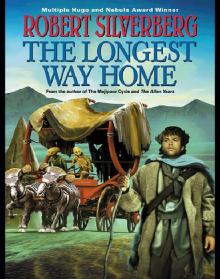 The Longest Way Home
The Longest Way Home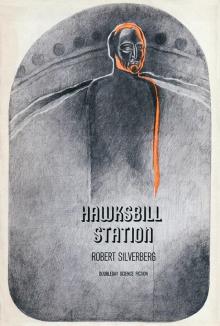 Hawksbill Station
Hawksbill Station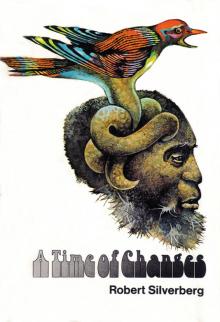 A Time of Changes
A Time of Changes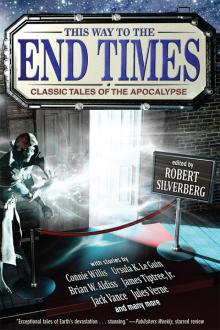 This Way to the End Times: Classic Tales of the Apocalypse
This Way to the End Times: Classic Tales of the Apocalypse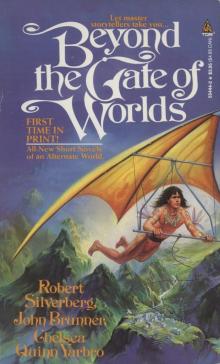 Beyond the Gate of Worlds
Beyond the Gate of Worlds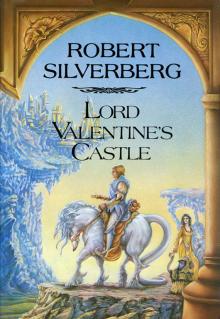 Lord Valentine's Castle
Lord Valentine's Castle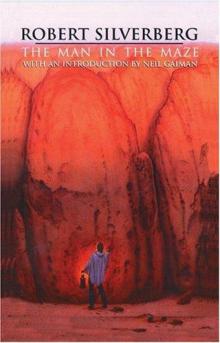 The Man in the Maze
The Man in the Maze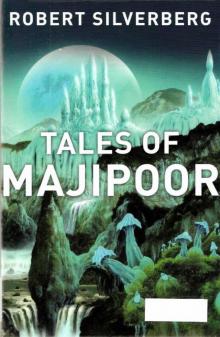 Tales of Majipoor
Tales of Majipoor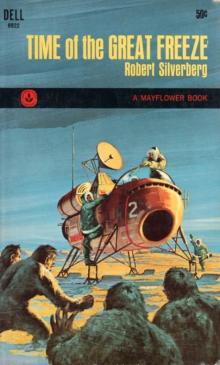 Time of the Great Freeze
Time of the Great Freeze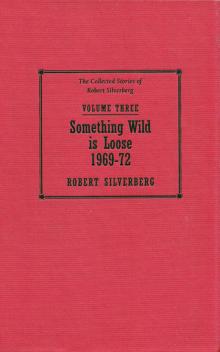 The Collected Stories of Robert Silverberg, Volume 3: Something Wild Is Loose: 1969-72
The Collected Stories of Robert Silverberg, Volume 3: Something Wild Is Loose: 1969-72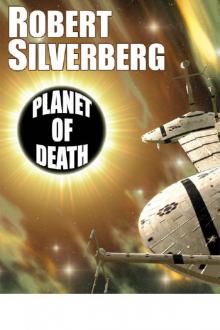 Planet of Death
Planet of Death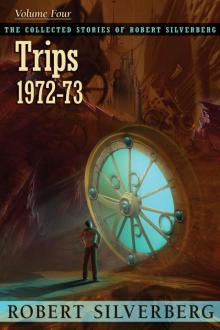 Trips: The Collected Stories of Robert Silverberg, Volume Four
Trips: The Collected Stories of Robert Silverberg, Volume Four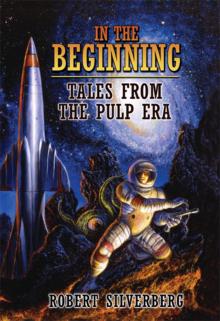 In the Beginning: Tales From the Pulp Era
In the Beginning: Tales From the Pulp Era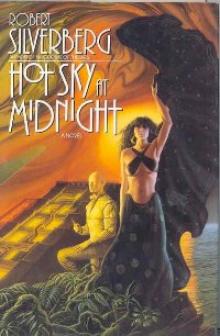 Hot Sky at Midnight
Hot Sky at Midnight Valentine Pontifex
Valentine Pontifex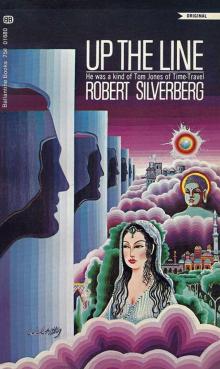 Up the Line
Up the Line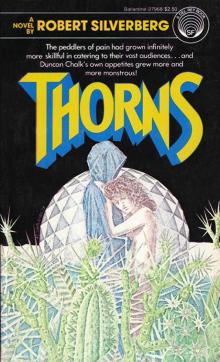 Thorns
Thorns Amanda and the Alien
Amanda and the Alien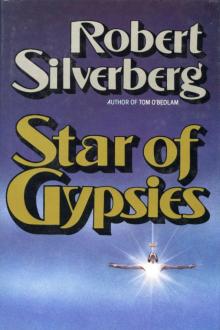 Star of Gypsies
Star of Gypsies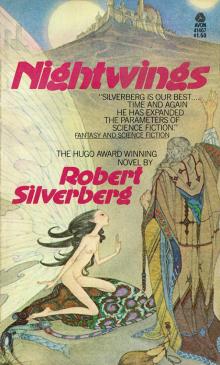 Nightwings
Nightwings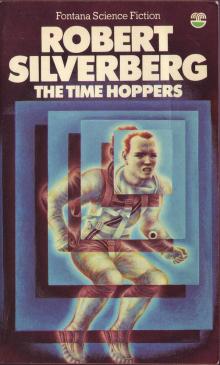 The Time Hoppers
The Time Hoppers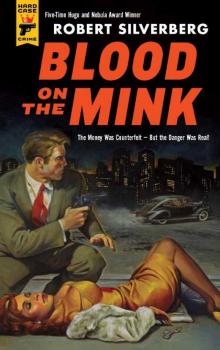 Blood on the Mink
Blood on the Mink Dying Inside
Dying Inside The Last Song of Orpheus
The Last Song of Orpheus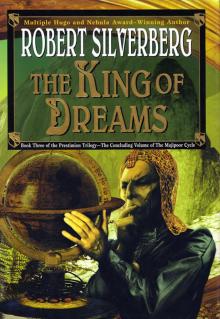 The King of Dreams
The King of Dreams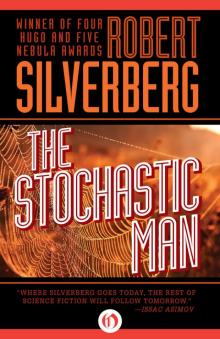 The Stochastic Man
The Stochastic Man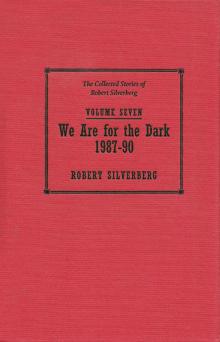 The Collected Stories of Robert Silverberg, Volume Seven: We Are for the Dark
The Collected Stories of Robert Silverberg, Volume Seven: We Are for the Dark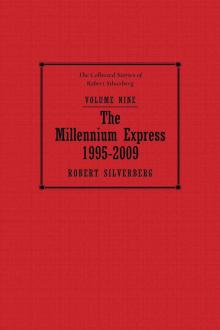 The Millennium Express: The Collected Stories of Robert Silverberg, Volume Nine
The Millennium Express: The Collected Stories of Robert Silverberg, Volume Nine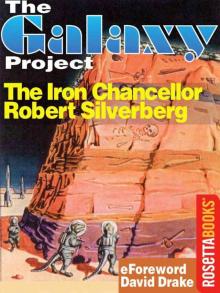 The Iron Chancellor
The Iron Chancellor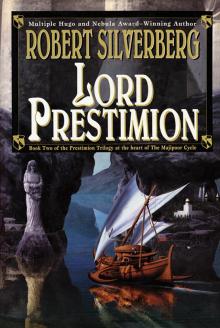 Lord Prestimion
Lord Prestimion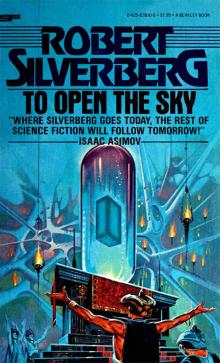 To Open the Sky
To Open the Sky The World Inside
The World Inside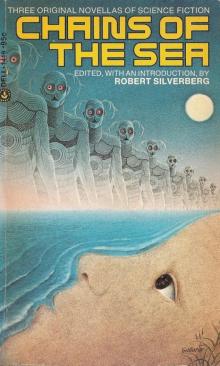 Chains of the Sea
Chains of the Sea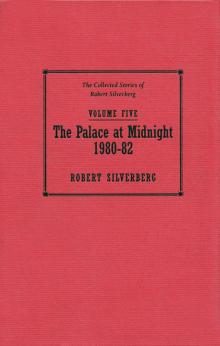 The Collected Stories of Robert Silverberg, Volume Five: The Palace at Midnight
The Collected Stories of Robert Silverberg, Volume Five: The Palace at Midnight Postmark Ganymede
Postmark Ganymede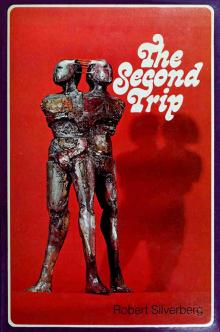 The Second Trip
The Second Trip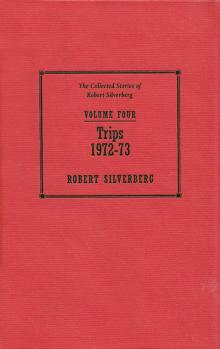 The Collected Stories of Robert Silverberg, Volume 4: Trips: 1972-73
The Collected Stories of Robert Silverberg, Volume 4: Trips: 1972-73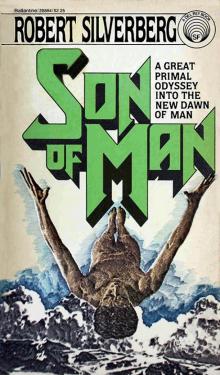 Son of Man
Son of Man Tom O'Bedlam
Tom O'Bedlam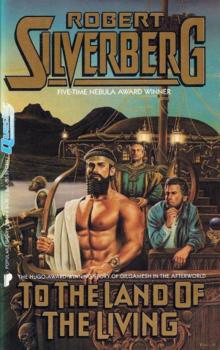 To the Land of the Living
To the Land of the Living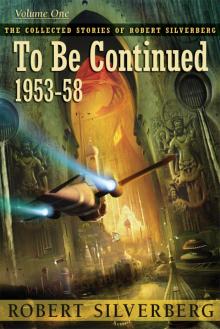 To Be Continued: The Collected Stories of Robert Silverberg, Volume One
To Be Continued: The Collected Stories of Robert Silverberg, Volume One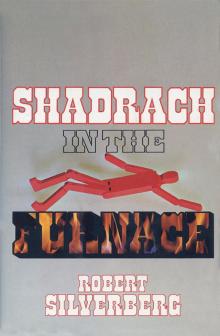 Shadrach in the Furnace
Shadrach in the Furnace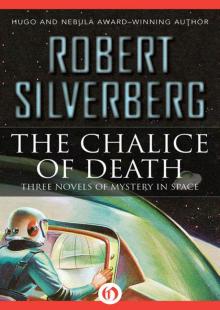 The Chalice of Death: Three Novels of Mystery in Space
The Chalice of Death: Three Novels of Mystery in Space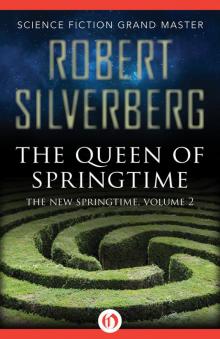 The Queen of Springtime
The Queen of Springtime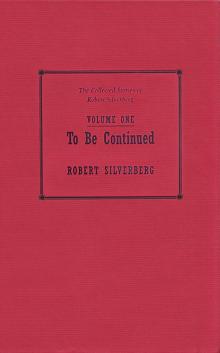 To Be Continued 1953-1958
To Be Continued 1953-1958 Legends
Legends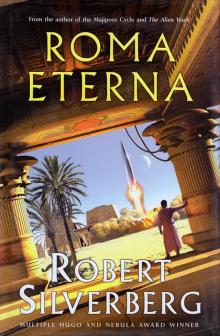 Roma Eterna
Roma Eterna To Live Again
To Live Again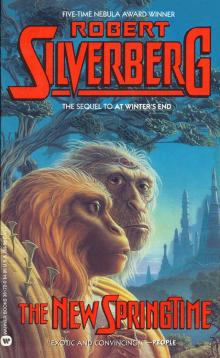 At Winter's End
At Winter's End Needle in a Timestack
Needle in a Timestack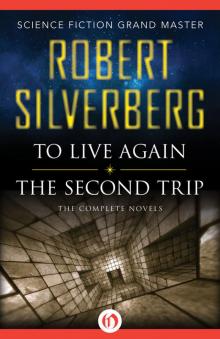 To Live Again and the Second Trip: The Complete Novels
To Live Again and the Second Trip: The Complete Novels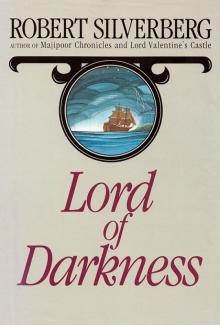 Lord of Darkness
Lord of Darkness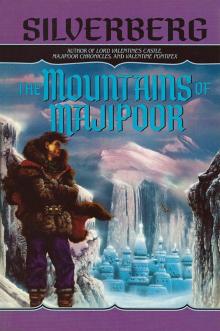 The Mountains of Majipoor
The Mountains of Majipoor The World Outside
The World Outside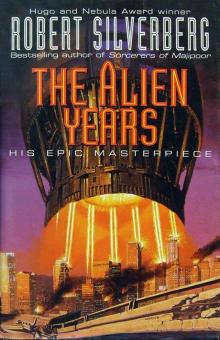 The Alien Years
The Alien Years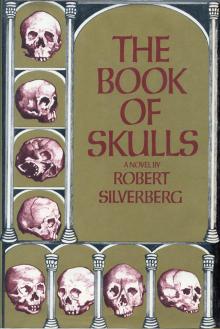 The Book of Skulls
The Book of Skulls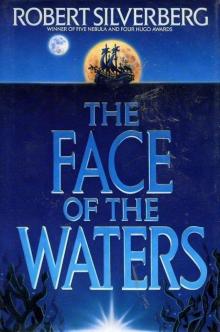 The Face of the Waters
The Face of the Waters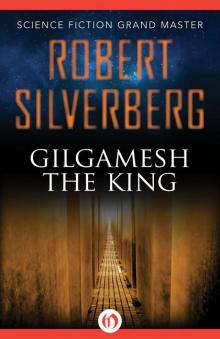 Gilgamesh the King
Gilgamesh the King The Collected Stories of Robert Silverberg, Volume 6: Multiples: 1983-87
The Collected Stories of Robert Silverberg, Volume 6: Multiples: 1983-87 The Happy Unfortunate
The Happy Unfortunate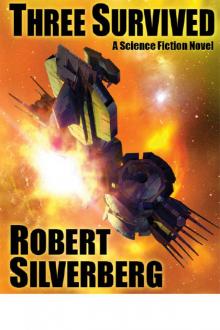 Three Survived
Three Survived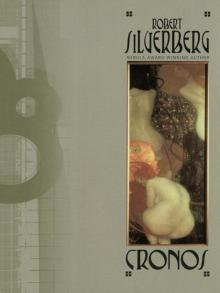 Cronos
Cronos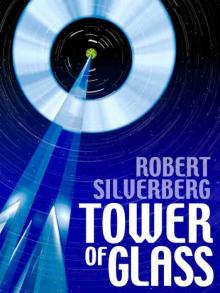 Tower of Glass
Tower of Glass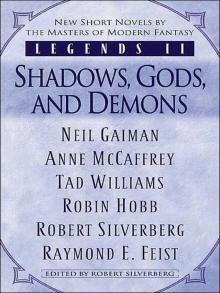 Legends II
Legends II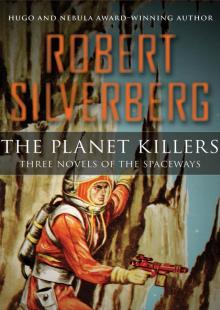 The Planet Killers
The Planet Killers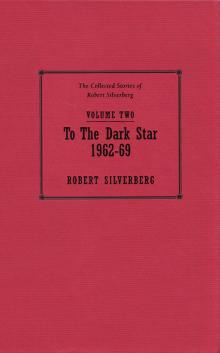 The Collected Stories of Robert Silverberg, Volume 2: To the Dark Star: 1962-69
The Collected Stories of Robert Silverberg, Volume 2: To the Dark Star: 1962-69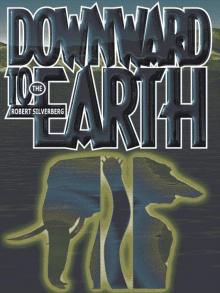 Downward to the Earth
Downward to the Earth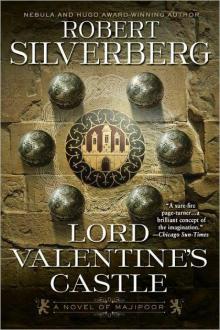 Lord Valentine's Castle: Book One of the Majipoor Cycle
Lord Valentine's Castle: Book One of the Majipoor Cycle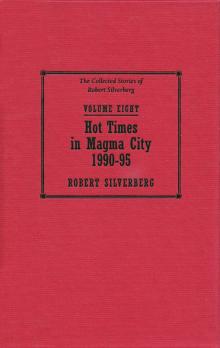 Hot Times in Magma City, 1990-95
Hot Times in Magma City, 1990-95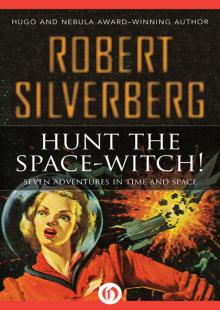 Hunt the Space-Witch! Seven Adventures in Time and Space
Hunt the Space-Witch! Seven Adventures in Time and Space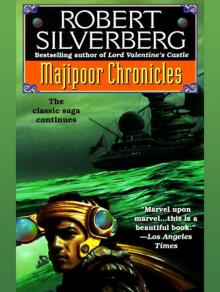 Majipoor Chronicles
Majipoor Chronicles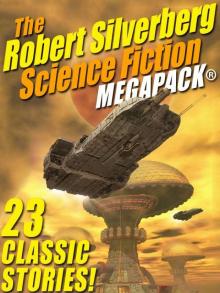 The Robert Silverberg Science Fiction Megapack(r)
The Robert Silverberg Science Fiction Megapack(r)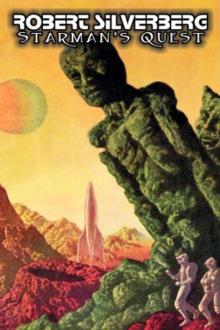 Starman's Quest
Starman's Quest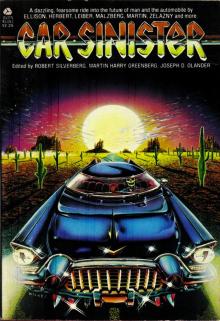 Car Sinister
Car Sinister Worlds of Maybe
Worlds of Maybe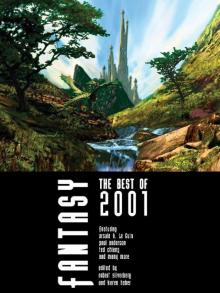 Fantasy The Best of 2001
Fantasy The Best of 2001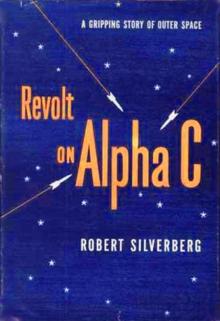 Revolt on Alpha C
Revolt on Alpha C Homefaring
Homefaring The Pardoner's Tale
The Pardoner's Tale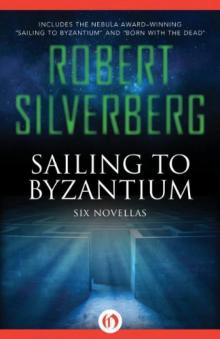 Sailing to Byzantium - Six Novellas
Sailing to Byzantium - Six Novellas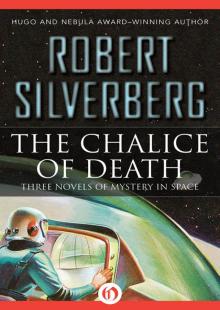 The Chalice of Death
The Chalice of Death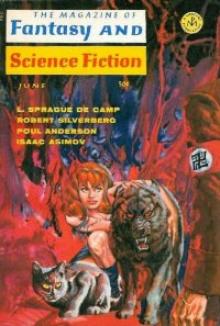 Sundance
Sundance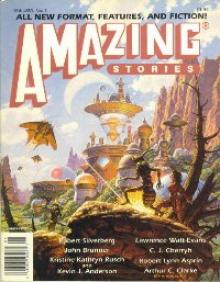 A Tip on a Turtle
A Tip on a Turtle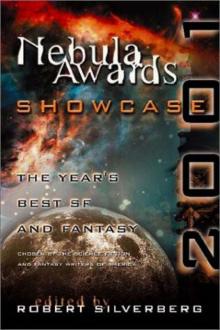 Nebula Awards Showcase 2001: The Year's Best SF and Fantasy Chosen by the Science Fiction and Fantasy Writers of America
Nebula Awards Showcase 2001: The Year's Best SF and Fantasy Chosen by the Science Fiction and Fantasy Writers of America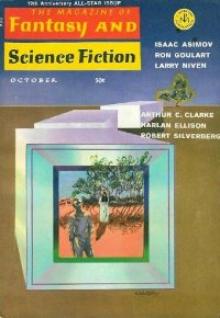 The Fangs of the Trees
The Fangs of the Trees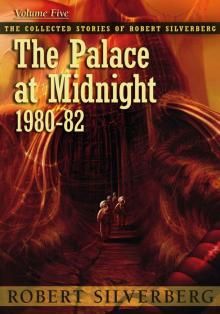 The Palace at Midnight: The Collected Work of Robert Silverberg, Volume Five
The Palace at Midnight: The Collected Work of Robert Silverberg, Volume Five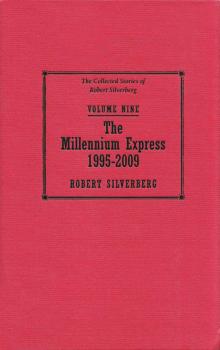 The Millennium Express - 1995-2009 - The Collected Stories of Robert Silverberg Volume Nine
The Millennium Express - 1995-2009 - The Collected Stories of Robert Silverberg Volume Nine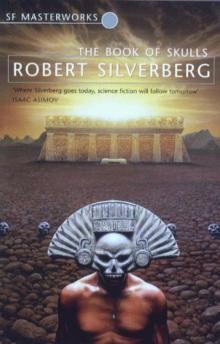 Book of Skulls
Book of Skulls Passengers
Passengers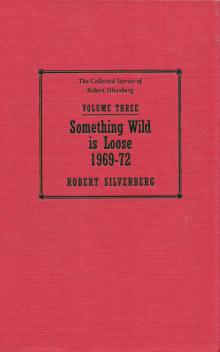 Something Wild is Loose - 1969–72 - The Collected Stories of Robert Silverberg Volume Three
Something Wild is Loose - 1969–72 - The Collected Stories of Robert Silverberg Volume Three Multiples
Multiples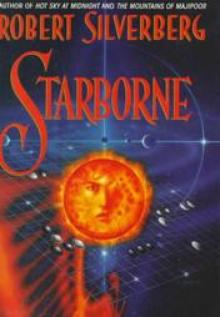 Starborne
Starborne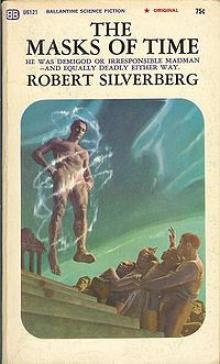 The Masks of Time
The Masks of Time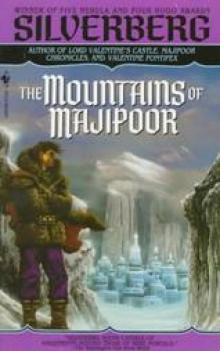 The Mountains of Majipoor m-8
The Mountains of Majipoor m-8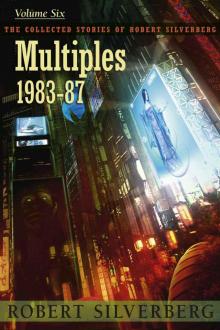 Multiples (1983-87)
Multiples (1983-87) Those Who Watch
Those Who Watch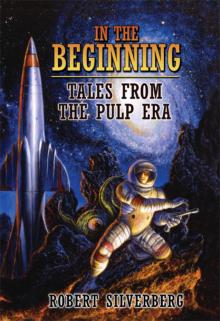 In the Beginning
In the Beginning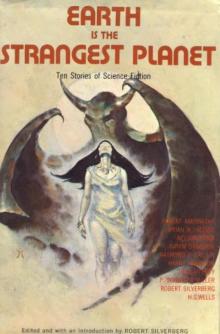 Earth Is The Strangest Planet
Earth Is The Strangest Planet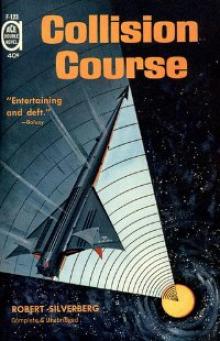 Collision Course
Collision Course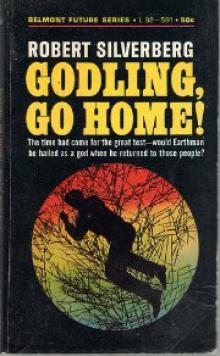 Neutral Planet
Neutral Planet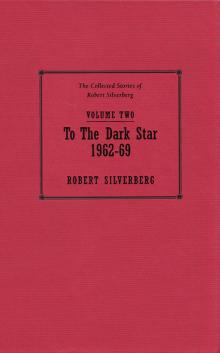 To the Dark Star - 1962–69 - The Collected Stories of Robert Silverberg Volume Two
To the Dark Star - 1962–69 - The Collected Stories of Robert Silverberg Volume Two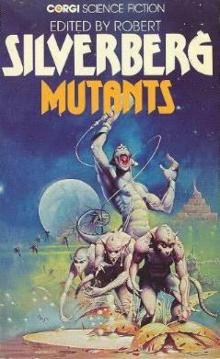 Mutants
Mutants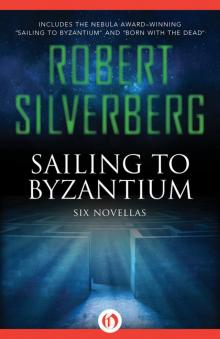 Sailing to Byzantium
Sailing to Byzantium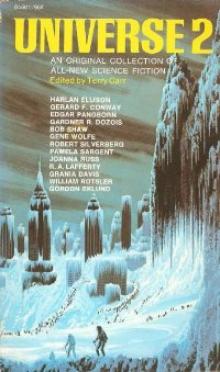 When We Went to See the End of the World
When We Went to See the End of the World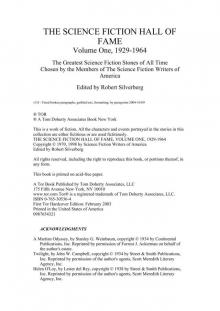 Robert Silverberg The Science Fiction Hall Of Fame Volume One, 1929-1964
Robert Silverberg The Science Fiction Hall Of Fame Volume One, 1929-1964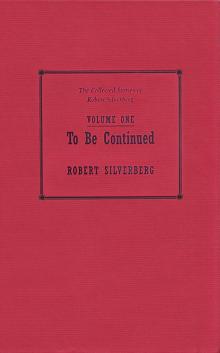 To Be Continued - 1953–58 - The Collected Stories of Robert Silverberg Volume One
To Be Continued - 1953–58 - The Collected Stories of Robert Silverberg Volume One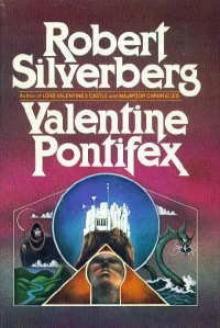 Valentine Pontifex m-3
Valentine Pontifex m-3 Gianni
Gianni Majipoor Chronicles m-2
Majipoor Chronicles m-2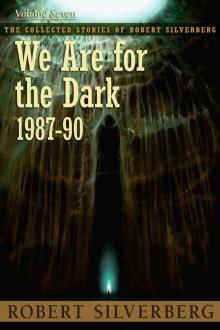 We Are for the Dark (1987-90)
We Are for the Dark (1987-90)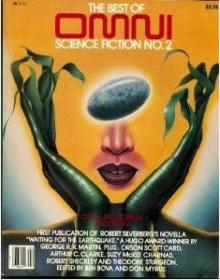 Waiting for the Earthquake
Waiting for the Earthquake Fantasy: The Best of 2001
Fantasy: The Best of 2001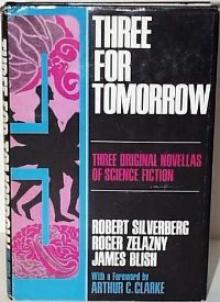 How It Was When the Past Went Away
How It Was When the Past Went Away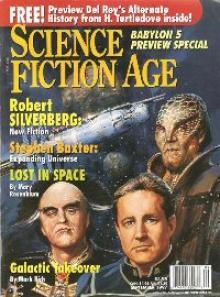 Beauty in the Night
Beauty in the Night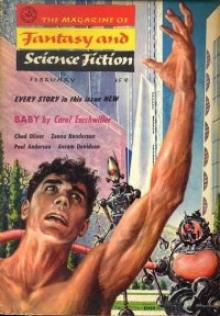 The Man Who Never Forgot
The Man Who Never Forgot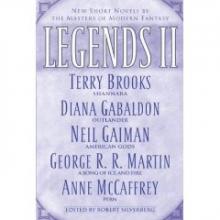 The Book of Changes m-9
The Book of Changes m-9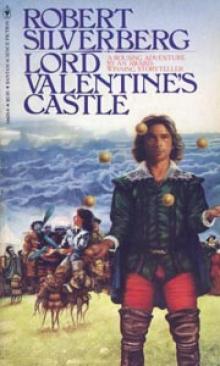 Lord Valentine's Castle m-1
Lord Valentine's Castle m-1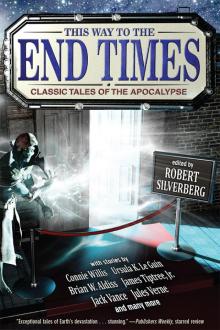 This Way to the End Times
This Way to the End Times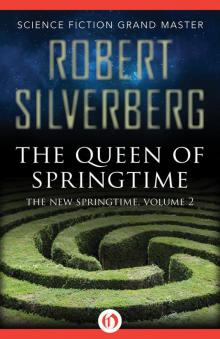 Queen of Springtime
Queen of Springtime Legends-Volume 3 Stories by the Masters of Modern Fantasy
Legends-Volume 3 Stories by the Masters of Modern Fantasy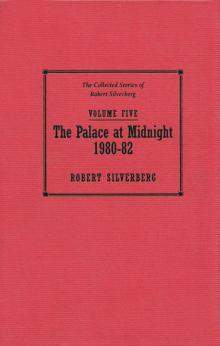 The Palace at Midnight - 1980–82 - The Collected Stories of Robert Silverberg Volume Five
The Palace at Midnight - 1980–82 - The Collected Stories of Robert Silverberg Volume Five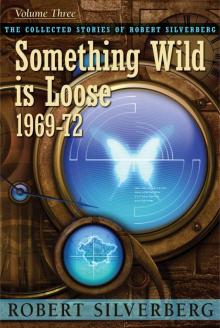 Something Wild is Loose: The Collected Stories of Robert Silverberg, Volume Three
Something Wild is Loose: The Collected Stories of Robert Silverberg, Volume Three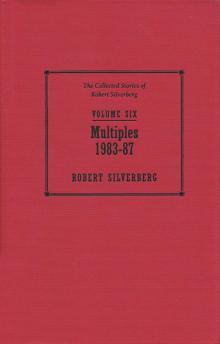 Multiples - 1983–87 - The Collected Stories of Robert Silverberg Volume Six
Multiples - 1983–87 - The Collected Stories of Robert Silverberg Volume Six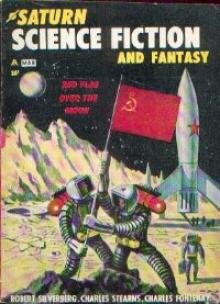 Alaree
Alaree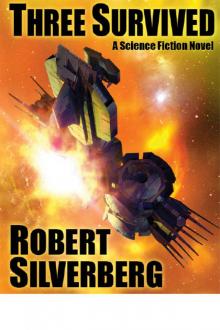 Three Survived: A Science Fiction Novel
Three Survived: A Science Fiction Novel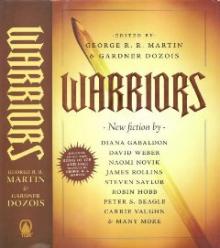 Defenders of the Frontier
Defenders of the Frontier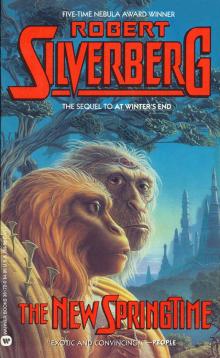 The New Springtime
The New Springtime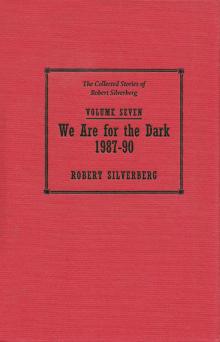 We Are for the Dark - 1987–90 - The Collected Stories of Robert Silverberg Volume Seven
We Are for the Dark - 1987–90 - The Collected Stories of Robert Silverberg Volume Seven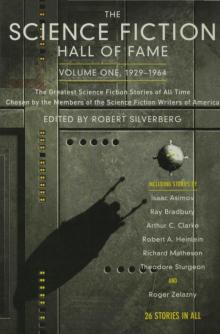 The Science Fiction Hall of Fame, Volume One 1929-1964--The Greatest Science Fiction Stories of All Time Chosen by the Members of the Science Fiction Writers of America
The Science Fiction Hall of Fame, Volume One 1929-1964--The Greatest Science Fiction Stories of All Time Chosen by the Members of the Science Fiction Writers of America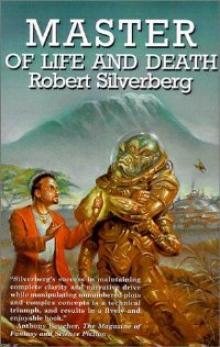 Master Of Life And Death
Master Of Life And Death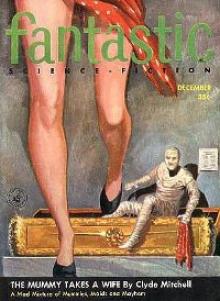 Choke Chain
Choke Chain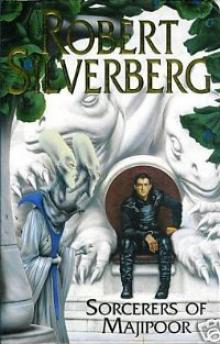 Sorcerers of Majipoor m-4
Sorcerers of Majipoor m-4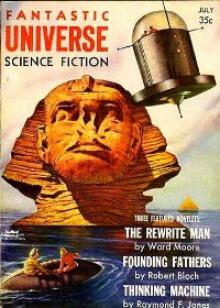 Absolutely Inflexible
Absolutely Inflexible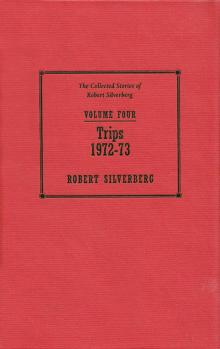 Trips - 1962–73 - The Collected Stories of Robert Silverberg Volume Four
Trips - 1962–73 - The Collected Stories of Robert Silverberg Volume Four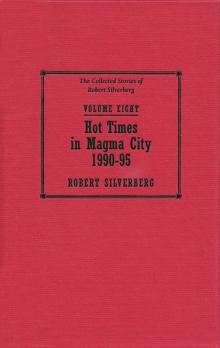 Hot Times in Magma City - 1990-95 - The Collected Stories of Robert Silverberg Volume Eight
Hot Times in Magma City - 1990-95 - The Collected Stories of Robert Silverberg Volume Eight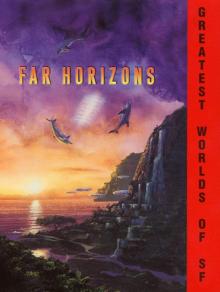 Far Horizons
Far Horizons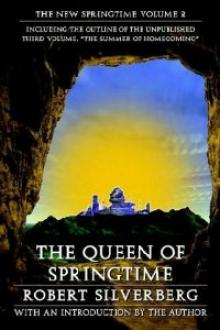 The Queen of Springtime ns-2
The Queen of Springtime ns-2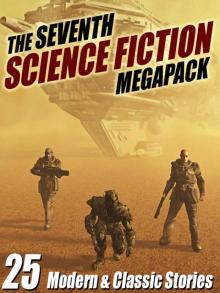 The Seventh Science Fiction Megapack
The Seventh Science Fiction Megapack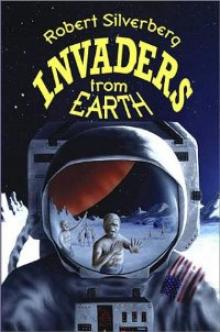 Invaders From Earth
Invaders From Earth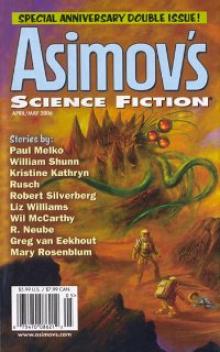 Hanosz Prime Goes To Old Earth
Hanosz Prime Goes To Old Earth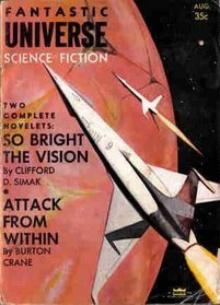 The Macauley Circuit
The Macauley Circuit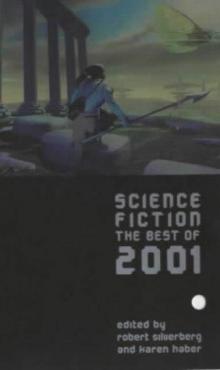 Science Fiction: The Best of 2001
Science Fiction: The Best of 2001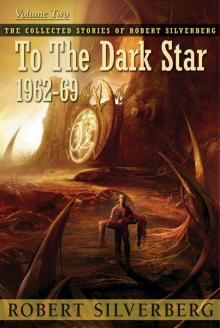 To the Dark Star: The Collected Stories of Robert Silverberg, Volume Two
To the Dark Star: The Collected Stories of Robert Silverberg, Volume Two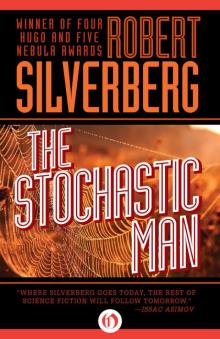 Stochastic Man
Stochastic Man Legends: Stories By The Masters of Modern Fantasy
Legends: Stories By The Masters of Modern Fantasy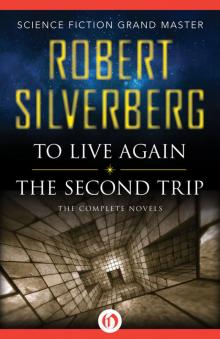 To Live Again And The Second Trip
To Live Again And The Second Trip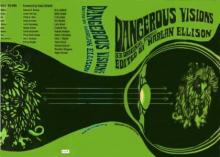 Flies
Flies The Silent Invaders
The Silent Invaders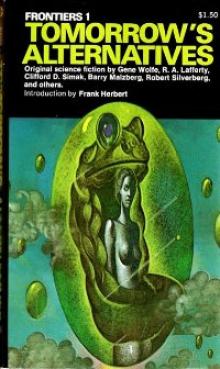 Ship-Sister, Star-Sister
Ship-Sister, Star-Sister